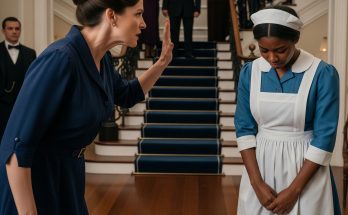People often say your first major personal milestone will stay with you forever. For some, it’s remembered with laughter, nervous anticipation, or the joy of new beginnings. For others, it’s awkward but harmless—a story to share years later. For me, it was none of those things.
My memory begins not with smiles or gentle moments, but with tears. I remember gripping my best friend’s hand while medical staff rushed around me, trying to stabilize what had become a frightening ordeal. What should have been a private step into adulthood ended instead with stained sheets, panic in the bathroom, and hours spent in hospital corridors.
This is not how anyone should have to remember such an important moment. I share my story not for sympathy, but as a lesson in why comprehensive health education—education that covers more than just the mechanics of biology—is vital. Knowledge, preparation, and honest communication can protect people from turning personal milestones into lifelong traumas.
Why First Experiences Vary So Widely
Culture often portrays “firsts” in simplified terms. Movies and media describe them as exciting, humorous, or at worst, mildly awkward. Rarely do we hear about what can happen when things go wrong. The truth is that without knowledge and preparation, first experiences can be confusing, painful, and even dangerous.
One of the main reasons is silence. In many households and communities, topics related to health and the body are avoided. Instead of guidance, young people grow up with myths, gossip from peers, or unrealistic portrayals from the internet. This leaves them unequipped for reality. When complications occur—whether physical injury, extreme pain, or emotional shock—they don’t know what’s happening or how to respond.
Had I been given accurate information about my body, emotional readiness, and the importance of open communication, my story might have ended very differently.
The Physical Consequences of Not Knowing Enough
What happened to me became a medical emergency. I sustained an injury that doctors later explained was completely preventable. A lack of preparation and misunderstanding about what was normal left me vulnerable.
Instead of having a personal, private experience, I found myself rushed into hospital rooms, surrounded by strangers trying to stop the bleeding and manage the damage. The hours I spent under bright lights and cold hands remain burned into my memory.
While the physical wounds eventually healed, the experience was a harsh lesson about how dangerous ignorance can be.
The Emotional Toll That Lingers
If the body recovers in weeks or months, the mind takes far longer. The physical injury faded, but emotionally, I carried the weight for years. I felt ashamed, embarrassed, and angry at myself. I replayed every moment in my head, wondering what I could have done differently.
Instead of associating intimacy with warmth and connection, I linked it with pain and fear. My confidence was shaken, and my ability to trust others suffered. This is why emotional readiness must be part of health education. Teaching only biology is not enough—people need to know that communication, respect, and emotional safety are just as important.
The Case for Comprehensive Health Education
At the heart of my experience lies a systemic failure: the absence of real, comprehensive health education. In many schools, the subject is reduced to warnings about avoiding pregnancy or disease. While important, that approach leaves out everything else young people need to know—about anatomy, consent, boundaries, and emotional well-being.
A comprehensive program should include:
Clear, age-appropriate information about anatomy and function.
Guidance on what discomfort is normal and what signals danger.
Conversations about communication, consent, and respect.
Preparation for emotional aspects, not just physical ones.
Dispelling of myths that continue to cause harm.
Myths That Put People at Risk
Several harmful misconceptions still circulate:
“The first time always has to hurt.” False. Mild discomfort is possible, but severe pain or bleeding is not normal and signals a problem.
“Preparation isn’t important.” Wrong. Emotional readiness, safety, and communication are essential.
“The only concern is pregnancy.” No—injuries, infections, and psychological effects matter just as much.
“Everyone just figures it out on their own.” This leaves people vulnerable to preventable harm.
Education dispels these myths and replaces them with facts that protect both body and mind.
Global Perspectives on Education
The impact of good education can be seen worldwide. In countries like the Netherlands and Sweden, where programs are science-based and open, young people report higher confidence, fewer health risks, and healthier relationships. Where education is limited or avoided, confusion and complications rise.
This proves that teaching people about their bodies doesn’t encourage recklessness—it equips them to make safe, informed decisions when they feel ready.
The Role of Families
Schools play a key role, but parents and guardians are equally important. Children need safe spaces at home to ask questions and learn the truth. Silence is not protection—it only leaves them unprepared. Parents who approach these conversations with honesty and compassion help their children build confidence instead of fear.
Recovery After Trauma
For me, recovery was about more than healing my body. I had to rebuild my confidence and trust in myself. What helped was follow-up medical care, supportive friends who reminded me I wasn’t alone, writing down my emotions, and eventually speaking with a counselor.
Everyone’s recovery looks different, but one truth remains the same: self-compassion is critical.
How Society Can Do Better
Preventing situations like mine requires collective action:
Advocate for real health education in schools.
Encourage open conversations in families.
Normalize seeking medical help when something feels wrong.
Recognize emotional well-being as part of overall health.
Conclusion: Turning Pain Into Purpose
My first experience was nothing like the stories people tell with laughter years later. It was fear, blood, and hospital rooms. But it also gave me a purpose: to speak openly so that others don’t have to endure what I did.
No one should carry trauma from something that should mark the beginning of a new chapter in life. With better education, open dialogue, and compassion, people can enter adulthood informed, safe, and confident.
If my story spares even one person from the same ordeal, then my pain has found its purpose.



